How to Choose the Right Gantry Crane for Your Material Handling Needs
Selecting the perfect gantry crane is a critical decision for any facility focused on efficient material handling.
Whether you operate a busy warehouse, a fabrication shop, or a construction staging area, the right crane can streamline workflows, enhance safety, and reduce labor costs. This guide will walk you through key considerations—capacity, span, mobility, and integration with other material-handling equipment—to help you choose a crane that aligns with your specific handling material requirements.
Understanding Gantry Cranes in the Material Handling Industry
What Is a Gantry Crane?
A gantry crane consists of a horizontal bridge supported by freestanding legs that run along fixed or portable rails. Unlike overhead bridge cranes that require building-mounted runways, gantry cranes can be installed without permanent infrastructure, making them a versatile choice for many operations.
-
Fixed Gantry Cranes: Ideal for dedicated areas with high lifting demands.
-
Portable Gantry Crane: Offers flexibility, allowing you to reposition the crane as workflows change. Check out this portable gantry crane for an example of a mobile, high‑capacity solution.
Gantry cranes are integral to the material handling industry, enabling teams to lift heavy loads—ranging from steel beams to large equipment—safely and efficiently.
Roles and Applications
Across diverse sectors, gantry cranes support critical tasks:
-
Manufacturing: Moving raw materials and finished products between workstations.
-
Fabrication: Positioning steel plates with a scissor lifting clamp for precise entry into cutting or welding stations.
-
Construction: Hoisting precast concrete or timber assemblies.
-
Logistics: Loading and unloading trucks or rail cars.
By automating heavy lifts, these cranes reduce the reliance on forklifts and manual labor, improving throughput and safety.
Key Selection Criteria for Gantry Cranes
Load Capacity and Safety Margins
The first step in selecting a gantry crane is understanding your maximum load requirements:
-
Maximum Working Load: Choose a crane with a rated capacity at least 25–50% above your heaviest lift to accommodate dynamic forces and safety factors.
-
Load Testing Standards: Ensure the crane complies with industry regulations (e.g., OSHA, ISO) for proof loads and annual inspections.
Overestimating capacity can lead to unnecessary costs, while underestimating can cause equipment failure or accidents.
Span, Lift Height, and Rail Configuration
-
Span (Distance Between Legs): Must cover the widest area where material needs to be moved.
-
Lift Height: Determine the maximum hook elevation required for your tallest loads or storage racks.
-
Rail Configuration: Decide between fixed rails—ideal for repeatable paths—and portable systems for flexible operations.
For compact workshops, shorter spans and lower heights may suffice; large yards may require expansive spans of 20 m or more.
Mobility: Fixed vs. Portable
A portable gantry crane provides unmatched flexibility:
-
Wheels or Casters: Allow relocation without disassembly.
-
Adjustable Height: Telescoping legs cater to different jobs.
-
Demountable Sections: Simplify storage and transport.
In contrast, fixed gantry cranes excel in stable, high‑volume production lines where relocation is infrequent.
Power and Control Options
-
Manual vs. Electric Hoists: Manual hoists cost less but require more operator effort; electric hoists speed up lifts and include precise controls.
-
Control Modes: Pendant, radio remote, or cabin‑mounted controls impact operator comfort and visibility.
-
Variable Speed Drives: Offer smooth acceleration and deceleration, crucial for delicate loads.
Choosing intuitive controls reduces training time and enhances operational safety.
Integrating Gantry Cranes with Other Material Handling Equipment
A gantry crane rarely works in isolation. Seamless integration with other lifting equipment boosts overall efficiency.
Complementary Lifting Devices
-
Vacuum Lifters: Attach a glass vacuum lifter to the crane hook for damage‑free handling of glass, metal sheets, or composite panels.
-
Slab Lifting Clamp: Use a slab lifting clamp for heavy stone or concrete slabs, ensuring balanced, multi‑point gripping.
-
Lifting Clamps: Mechanical clamps provide quick attachment on steel plates and beams.
By equipping a single gantry crane with modular attachments, teams can handle a wide variety of loads without installing multiple cranes.
Workflow Coordination with Scissor Lifters
Scissor lifters offer precise vertical adjustments, making them an ideal partner for gantry cranes:
-
Align loads to conveyor height or machine infeed levels.
-
Reduce manual stacking or repositioning by syncing crane and lifter movements.
-
Improve ergonomics and safety for operators handling containerized goods or kitted assemblies.
Securing Loads with Ratchet Straps
After lifting, teams often transport loads on trolleys or flatbeds. Secure them with ratchet straps equipments to prevent shifting and comply with safety standards. Properly tensioned straps ensure materials remain stable during horizontal moves.
Ensuring Safety and Compliance
Operator Training and Certification
Proper training is non‑negotiable. Operators should be certified in:
-
Gantry Crane Operation: Safe load attachment, movement, and emergency procedures.
-
Attachment Use: Understanding the mechanics of vacuum and slab lifting attachments.
-
Site-Specific Protocols: Communication signals, pedestrian zones, and lockout/tagout procedures.
Inspection and Maintenance Programs
Implement a preventive maintenance schedule:
-
Daily Checks: Visual inspection of hoists, hooks, rails, and safety devices.
-
Monthly Servicing: Lubrication, belt or chain tension adjustments, and electrical system tests.
-
Annual Load Testing: Verify structural integrity and rated capacity under supervision.
Regular maintenance maximizes uptime and prolongs equipment lifespan.
Working with Material Handling Companies
Vendor Selection and Custom Solutions
Partner with reputable material handling companies to:
-
Conduct site assessments and workflow analyses.
-
Design bespoke solutions—e.g., custom spans, load attachments, and control systems.
-
Provide turnkey installation and commissioning services.
After‑Sales Support and Spare Parts
Ensure your vendor offers:
-
24/7 Technical Support: Rapid response to critical failures.
-
Spare Parts Availability: Fast delivery of hoists, motors, and safety components.
-
Training Programs: Refresher courses for new equipment or updated regulations.
Strong vendor relationships are key to sustained operational excellence.
Future Trends in Gantry Crane Technology
Automation and Industry 4.0 Integration
-
Smart Cranes: IoT sensors monitor load cycles, motor health, and usage patterns for predictive maintenance.
-
Semi‑Autonomous Operation: Automated lift sequences reduce operator fatigue and increase consistency.
-
Data Analytics: Streamlined material flow analysis optimizes crane placement and workflow design.
Sustainable and Energy‑Efficient Designs
-
Regenerative Drives: Capture braking energy to power auxiliary systems.
-
Hybrid Power Options: Combine diesel and electric power for off‑grid flexibility.
-
Lightweight Alloys: Reduce crane dead weight and foundation requirements.
Adopting these innovations future‑proofs your material handling infrastructure.
Conclusion
Choosing the right gantry crane for your material handling needs involves balancing capacity, span, mobility, controls, and integration with complementary lifting equipment. By carefully assessing your load profiles—whether you’re handling heavy slabs with a slab lifting clamp, delicate panels with a glass vacuum lifter, or diverse materials with lifting clamps—you can configure a crane system that maximizes efficiency and safety.
Incorporate best practices for operator training, maintenance, and securing loads with ratchet straps equipments. Partner with seasoned material handling companies to design, install, and support your solution. As the material handling industry evolves—with trends toward automation, sustainability, and smart integration—your investment in the right portable gantry cranes and associated material-handling equipment will pay dividends in productivity, cost savings, and operational agility.













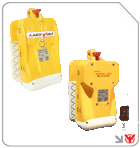

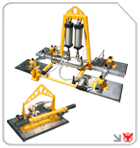
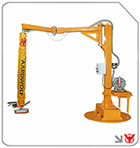
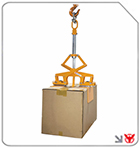
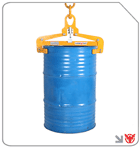

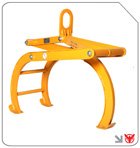

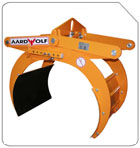
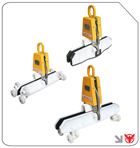

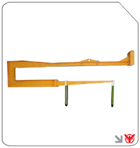
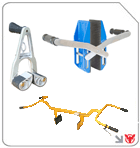
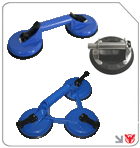

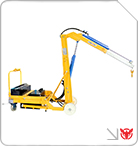

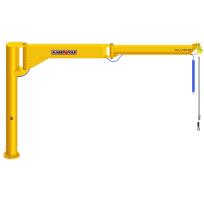
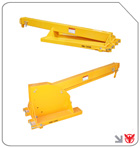
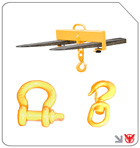
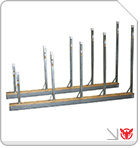
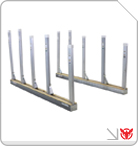
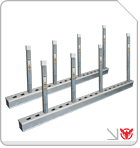



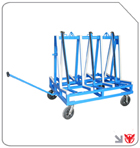

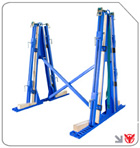
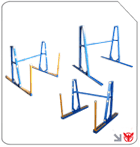
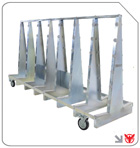



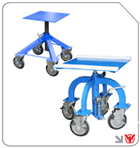




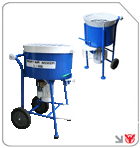

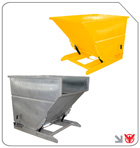

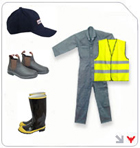
Follow us on: